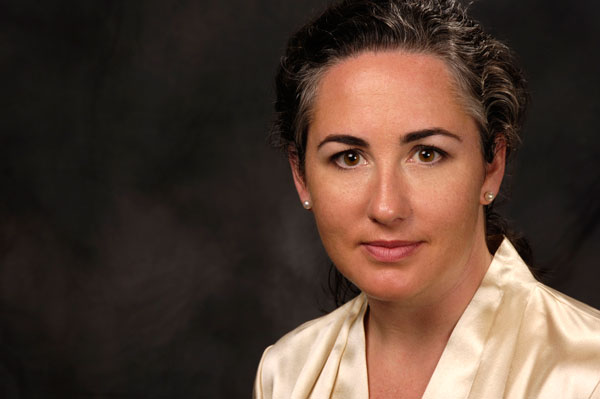The Rapidly Evolving World of Alternative Payments: An Interview with Erin McCune
January 2010
 Erin is a partner at Glenbrook Partners, LLC a payment strategy consulting firm. She focuses her efforts at Glenbrook on client engagements in business-to-business (B2B) payments and social media/Web 2.0 in banking and financial services.
Erin is a partner at Glenbrook Partners, LLC a payment strategy consulting firm. She focuses her efforts at Glenbrook on client engagements in business-to-business (B2B) payments and social media/Web 2.0 in banking and financial services.
Erin has over twelve years of experience leading increasingly complex B2B payment initiatives for corporate clients and advising financial institutions and technology firms on the development of their cash management capabilities. Erin’s practice enables her corporate clients to reduce costs and increase working capital through technology enhancements, electronic payment, increased ERP efficiency, and strategic implementation of treasury management solutions. In addition, she helps financial institutions and technology companies develop profitable treasury products that deliver effective results for their corporate customers.
Erin’s blog posts and articles cover topics related to corporate finance, treasury technology, B2B payments, change leadership and financial process improvement.
Before joining Glenbrook, Erin was the founder of Forte Financial, a consulting firm focused on corporate finance efficiency, accuracy, and technology. Her work is grounded in proven change leadership and program management methodology, ensuring lasting results. She believes that “great strategy and clever technology solutions are too often casualties of poor execution” and is therefore committed to supporting clients from concept to reality.
Prior to Forte Financial, Erin spent her early career in advertising and publicity. She was an Advertising Account Executive in Eastern Europe in the early 1990s during a period of historic economic and social transformation. Later she witnessed firsthand the transformation of the publishing industry as chain book stores became dominant and an Internet upstart named Amazon ventured into book selling.
Erin holds a B.A. in English from the University of California, Davis, and an MBA from the Marshall School of Business at the University of Southern California. She is a Certified Treasury Professional (CTP), a certification granted by the Association of Financial Professionals.
FWA: What are the current trends in the emerging and alternative payments space? McCune: Well, they aren’t all that alternative or so emerging anymore, for one. In the online domain, emerging payments poster child PayPal has been around for ten years, and continues to innovate, even though it is now an incumbent with new solutions (like Zong for mobile payments or Intuit’s Payment Network for small businesses) eagerly nipping at its heels.
There are three trends that occupy most of our attention. At the top of the list, of course, is mobile – really what is becoming the mobile- social ecosystem. Mobile is so important that I think the question is not “what are mobile payments”, but rather “how do payments fit into a mobile world?” Social networks, Web 2.0 technologies and location technologies are all important pieces of a rapidly shifting environment.
The second trend is the increasing globalization of commerce. This is particularly important for payments, which have historically underserved the cross-border transaction needs of both consumers and companies.
The third trend is the ongoing battle for “ready funds” access: if a consumer wants to pay with funds they have, will that be done through the debit networks, the ACH, or a mix? Will it be done by drawing funds out of a bank account, or from a prepaid card or online account? You can find bets on every side of that argument in the industry today.
FWA: Who makes up your client base? Are they primarily online companies or brick and mortar companies trying to engage a more powerful online presence?
McCune: Glenbrook Partners’ customers represent the entire payments value chain – not just ecommerce merchants and traditional brick-and-mortar firms. We work with payment networks, payment processors, banks, financial technology firms, and investors in the payments industry. Our clients range from household brands to stealth payment start-ups.
My areas of focus are B2B payments, often between manufacturers and their suppliers where most payments remain stubbornly check-based, and the emerging world of social/ Web 2.0 payments. (Two areas that have yet to intersect, although I am doing my best to persuade the industry to make traditional treasury and cash management solutions more modern, timely, and user-friendly.)
FWA: What do you see as the most exciting emerging technology development in alternative payments? McCune: The emergence of application platforms - such as the iPhone app store,
the LinkedIn application platform, and of course Facebook have created a whole army of developers that are creating both niche and broadly applicable solutions that have payment needs. Callable payment services – APIs – from Amazon and now PayPal have emerged to enable developers to focus on clever solutions and plug in payment capabilities from established payment providers, with robust risk management, extensive reach, and reliable means of processing large volumes of transactions.
At Glenbrook we are eagerly anticipating a proliferation of new payment capabilities from developers based on the new PayPal X Platform. These won’t all be Internet solutions: this is going to change the way we pay at the point-of-sale, how we donate and pay dues, how we contribute for pizza or a night on the town with friends, pay our local taxes, send funds overseas, etc. This concept is not lost on traditional payments providers – one of the primary rationales that AmEx offered for its recent acquisition of Revolution Money was the startup company’s technology and ability to connect via APIs.
FWA: What is the biggest barrier to entry for new payment channels? McCune: Payments startups are plagued by the age-old chicken and egg dilemma. To succeed, a new payment mechanism must cultivate broad acceptance among merchants as well
as consumers. But the nature of this challenge is changing dramatically. New startups are handling the “egg” (merchant) side by doing fast deals with acquirers. Reaching the “chicken” (consumer) is still hard, but the social networks have huge potential to change this.




